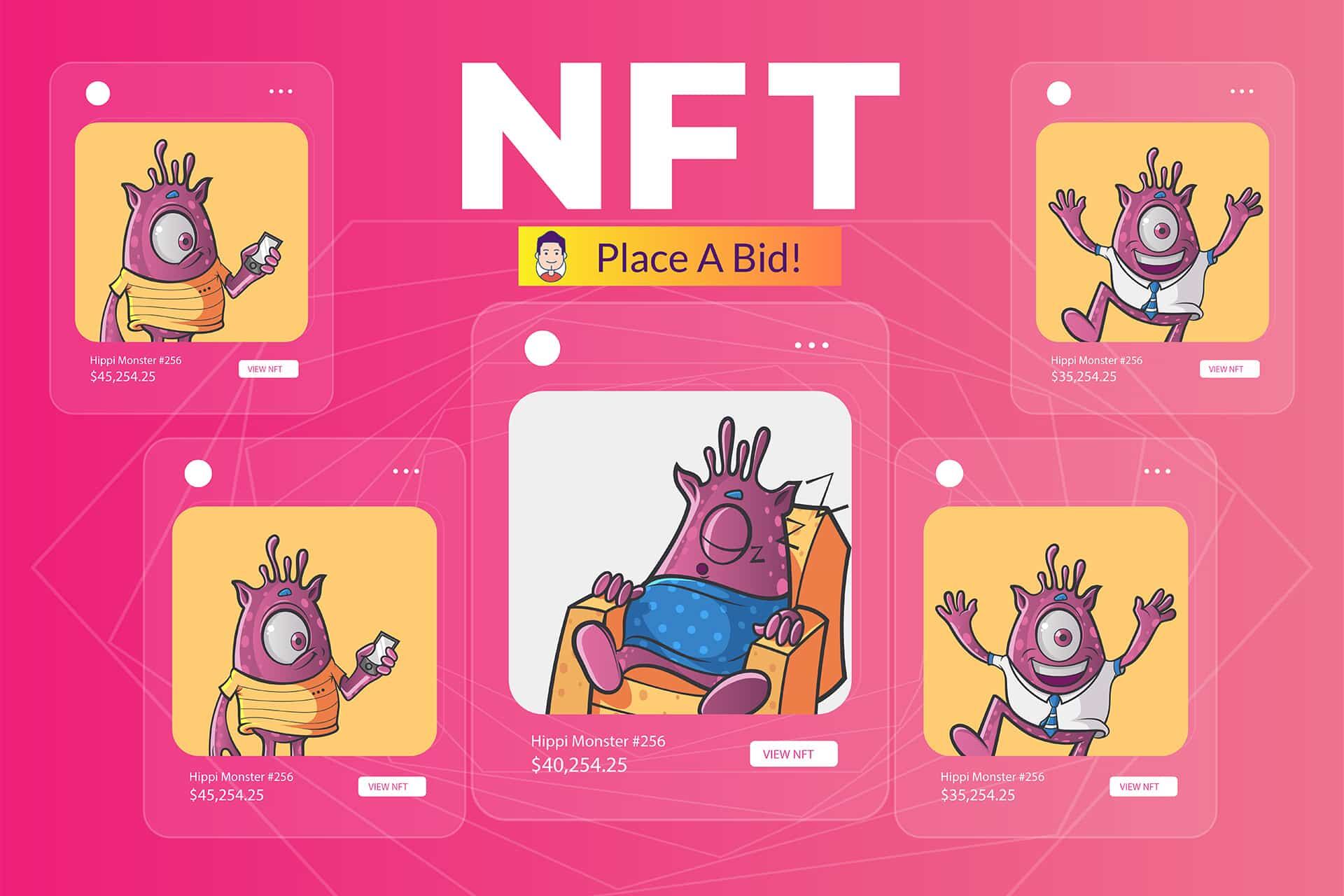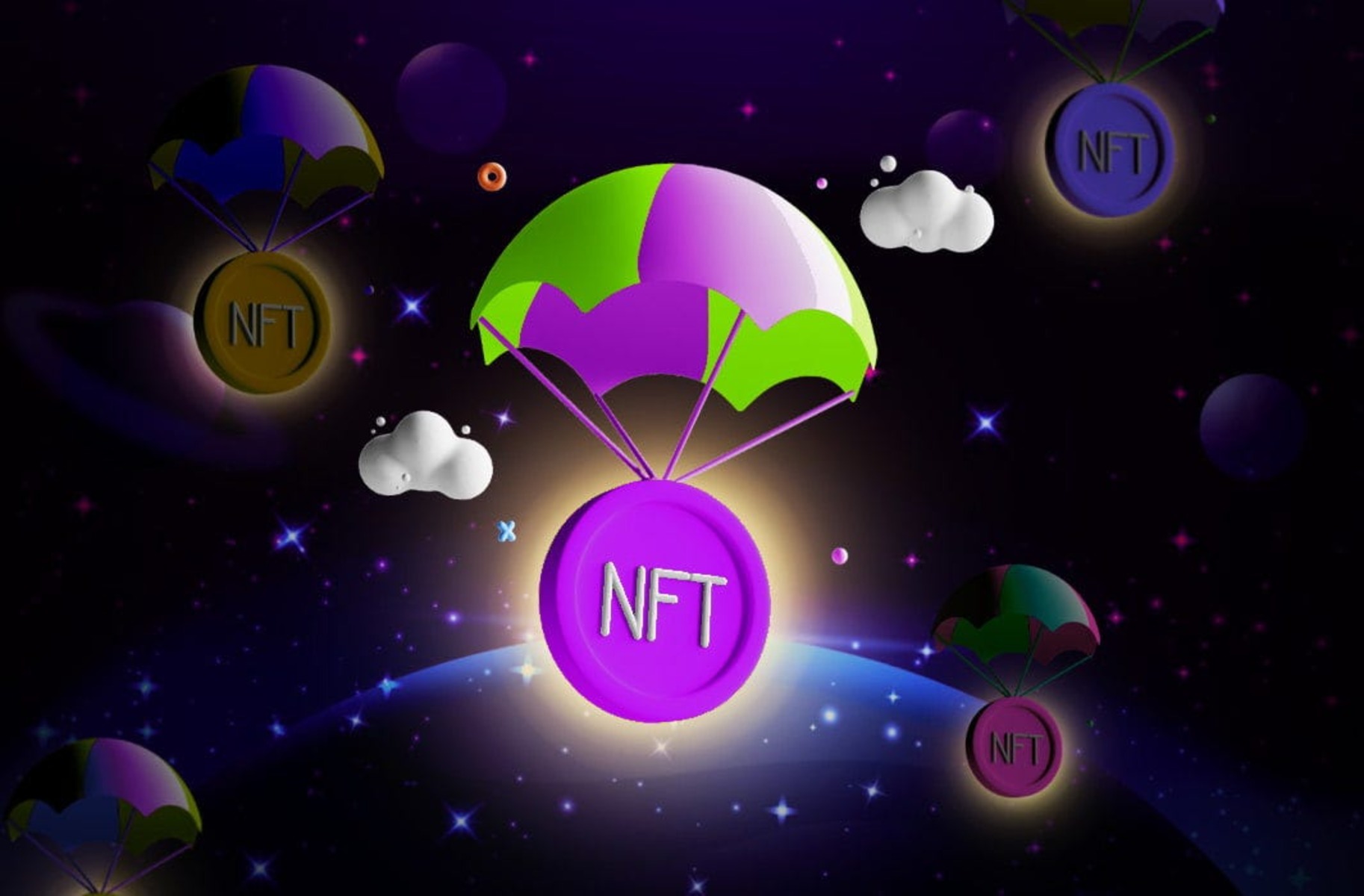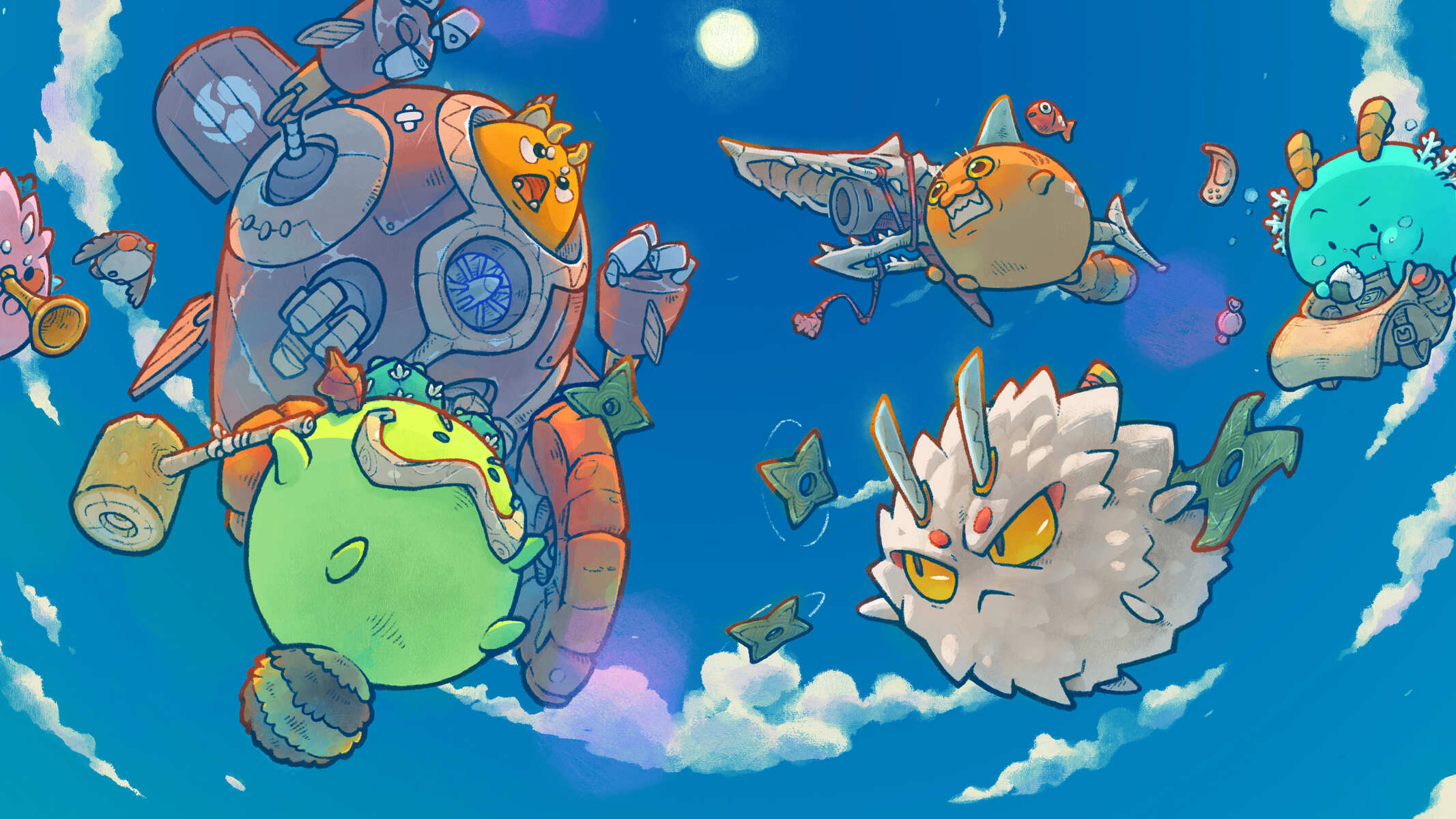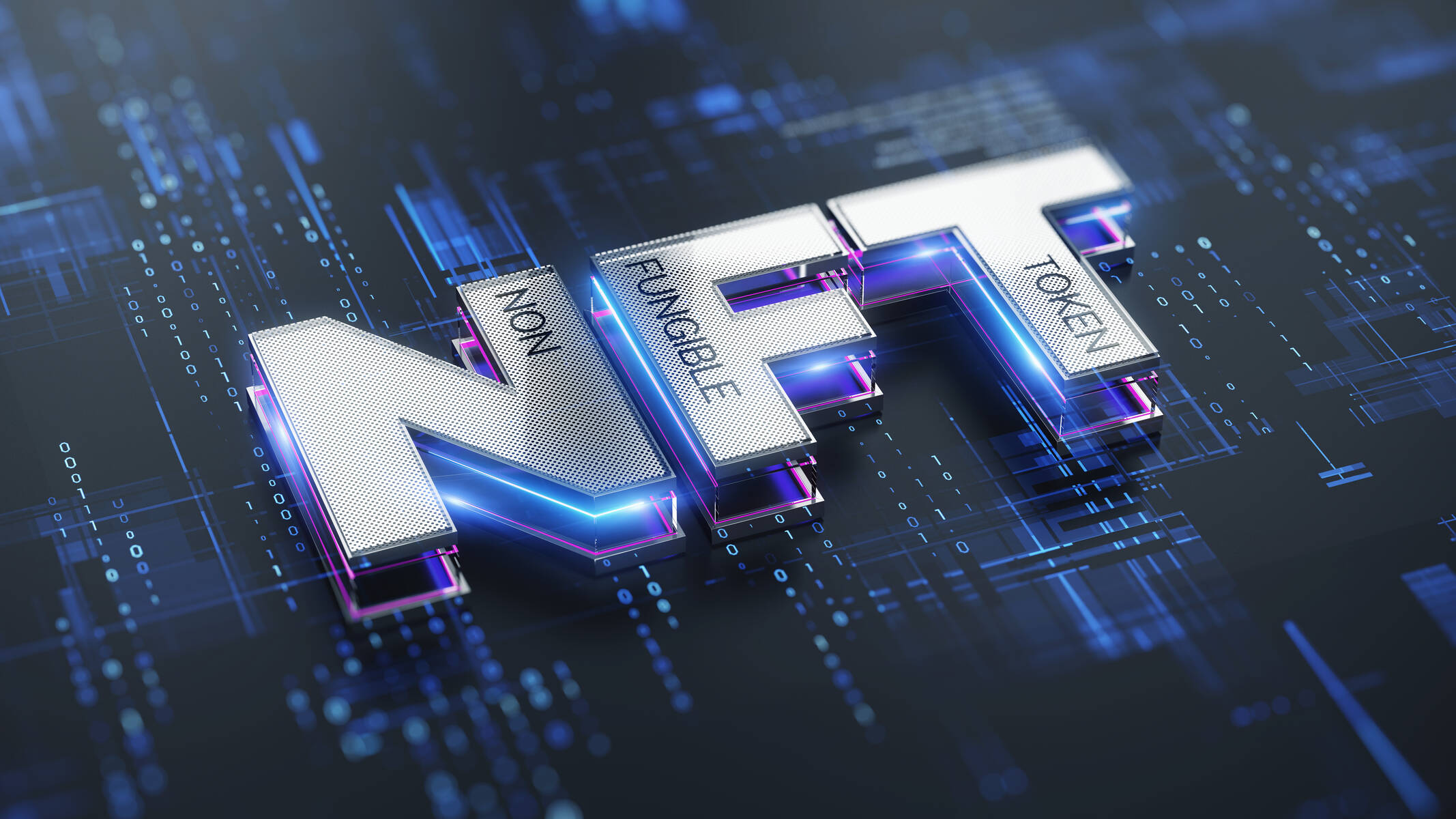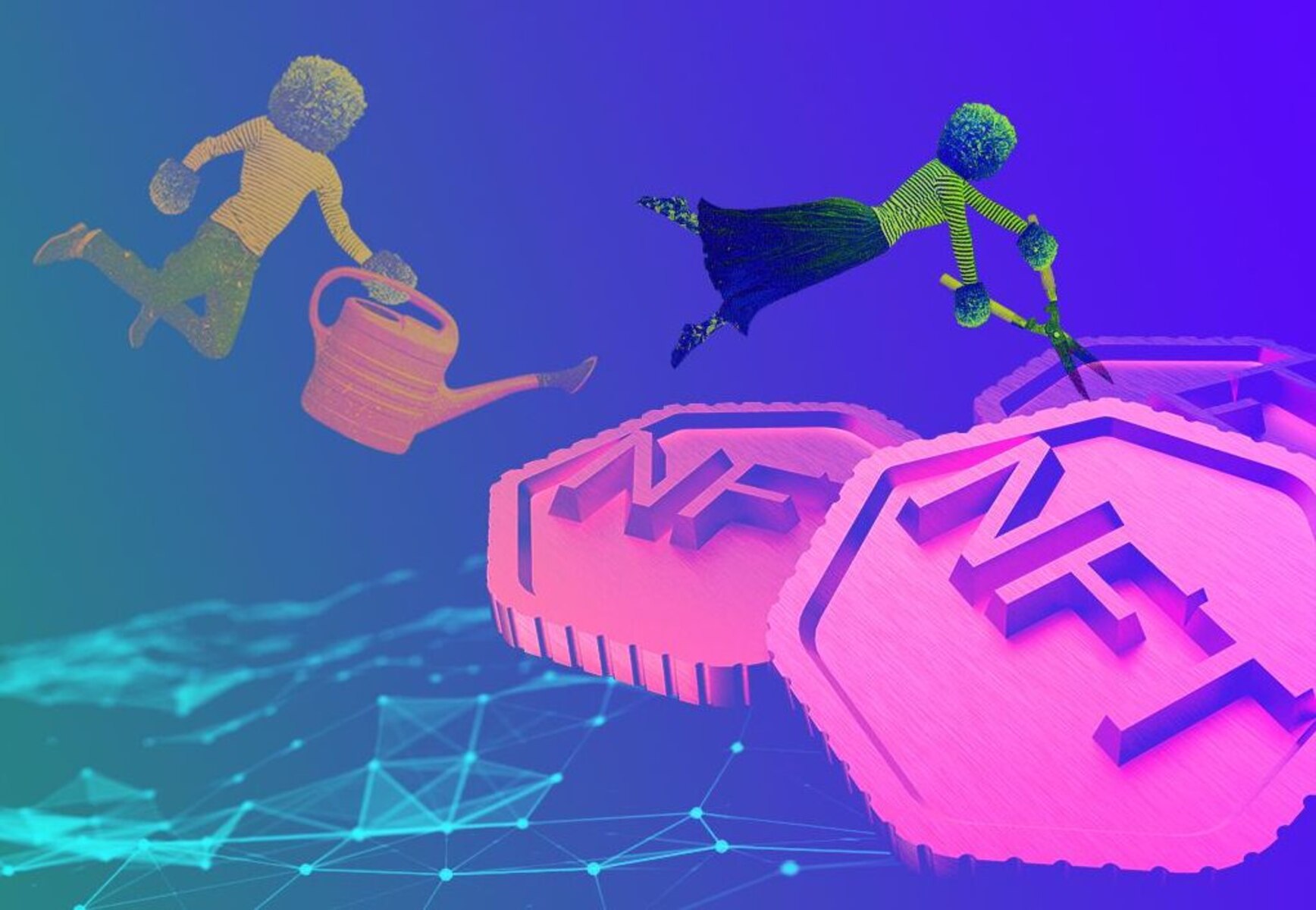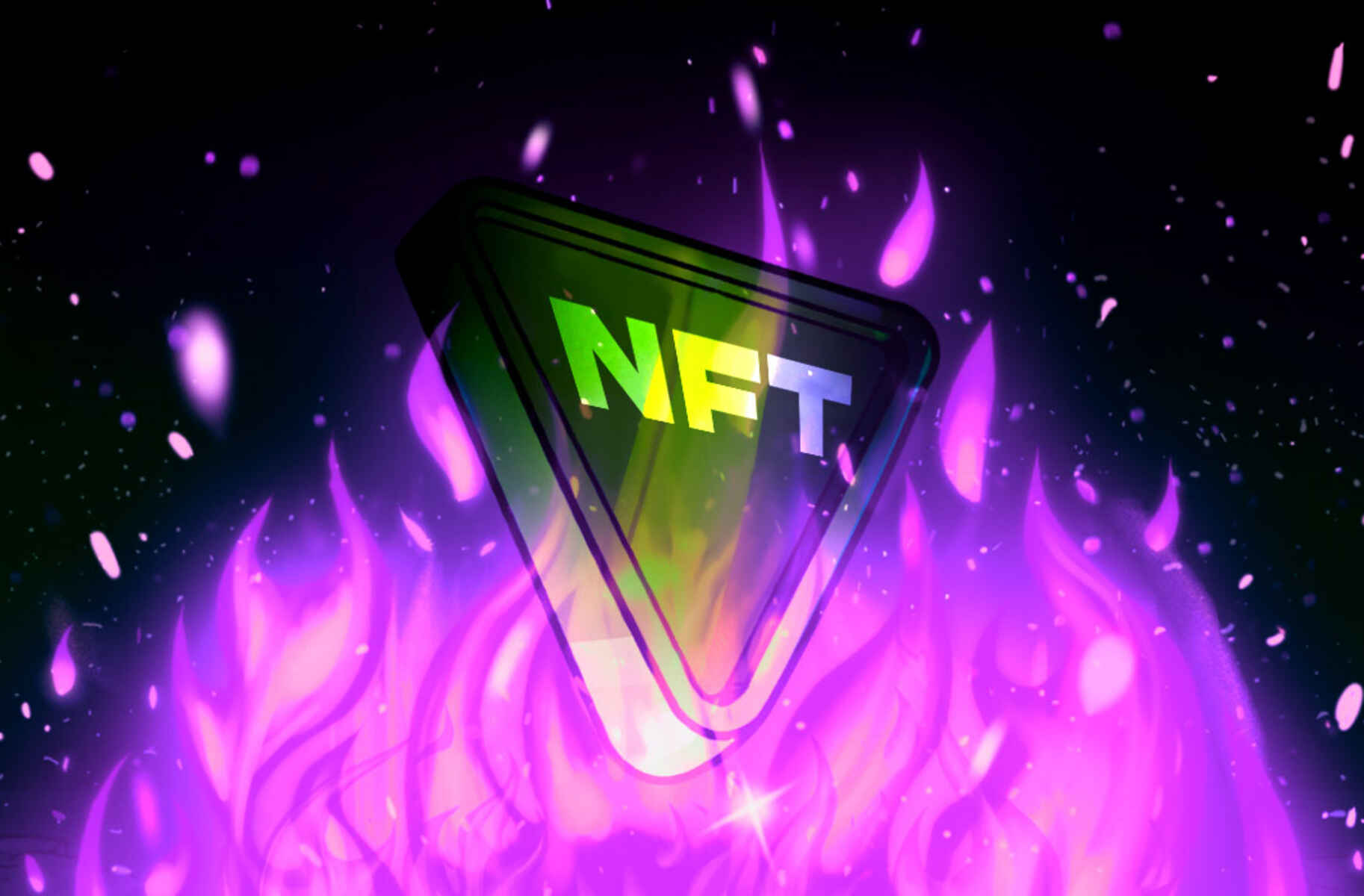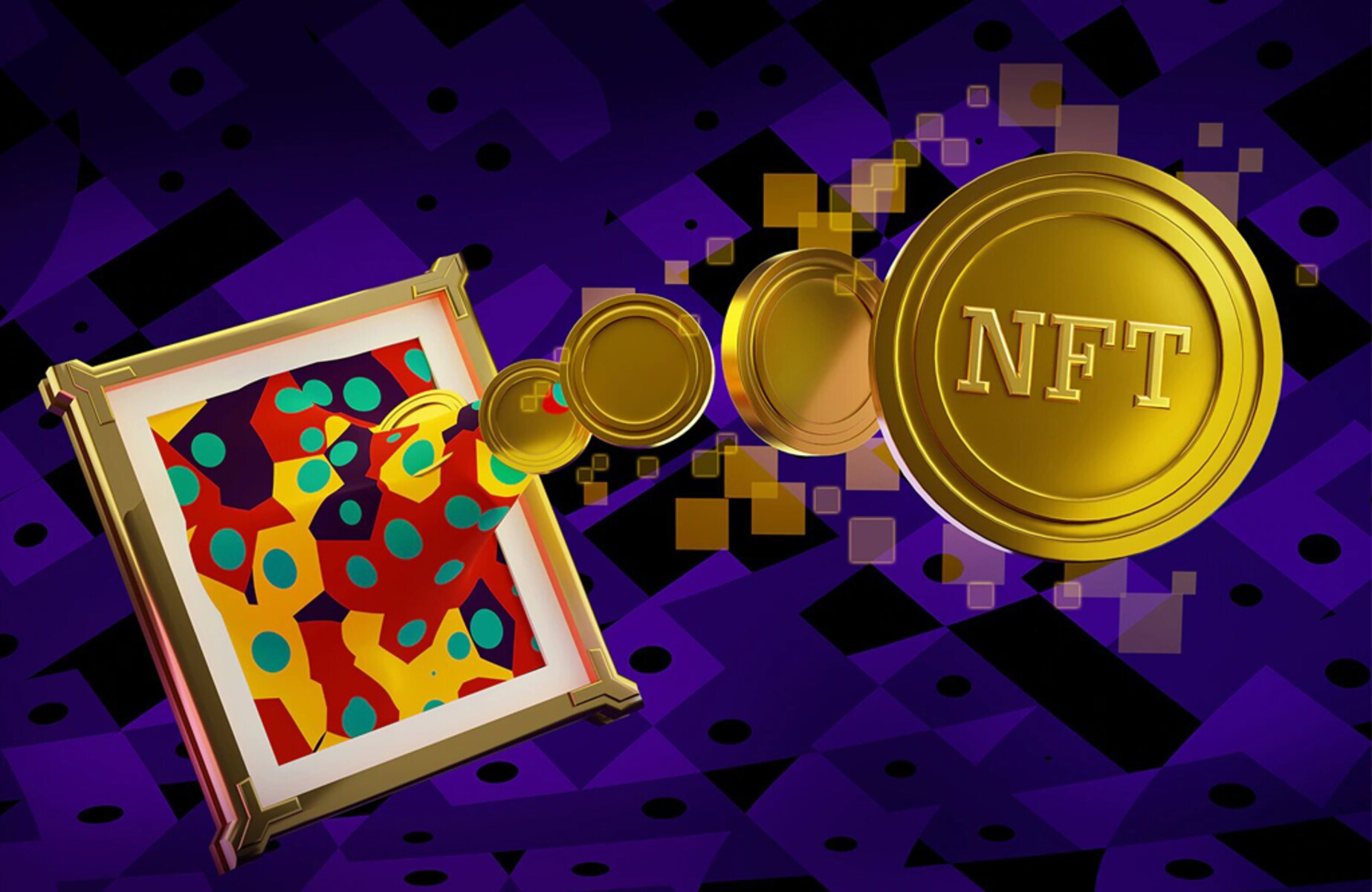Introduction
Welcome to the exciting world of Non-Fungible Tokens (NFTs). Over the past few years, NFTs have gained significant attention in various industries, from art and music to gaming and collectibles. But what exactly is an NFT? In this article, we will delve into the definition of NFTs, how they work, their benefits, use cases, concerns, famous examples, and their future.
Non-Fungible Tokens, or NFTs, are unique digital assets that exist on a blockchain network, typically powered by Ethereum. Unlike traditional cryptocurrencies like Bitcoin or Ethereum, which are fungible and can be exchanged on a one-to-one basis, NFTs are indivisible and represent ownership of a specific item or piece of content, such as artwork, music, videos, virtual real estate, or even virtual in-game items.
The distinguishing feature of an NFT is its ability to provide indisputable proof of authenticity, rarity, and ownership. Each NFT contains metadata, including relevant information about the asset it represents, such as the creator, description, and unique identification code. This metadata is stored on the blockchain, making it publicly accessible and verifiable.
At its core, the concept of an NFT leverages the power of blockchain technology to create scarcity and establish a decentralized system for the ownership and trading of digital assets. The blockchain ensures transparency, immutability, and security, making it impossible to counterfeit or duplicate NFTs.
Now that we have a basic understanding of what NFTs are, let’s explore how they work and the benefits they offer.
Definition of NFT
A Non-Fungible Token (NFT) is a type of digital asset that represents ownership or proof of authenticity of a unique item or piece of content. Unlike cryptocurrencies such as Bitcoin or Ethereum, which are fungible and can be exchanged on a one-to-one basis, NFTs are indivisible and cannot be exchanged on an equal value basis.
One of the key features of NFTs is their uniqueness. Each NFT has a distinct and irreplaceable value, making it different from any other token in existence. This uniqueness is achieved through the use of blockchain technology, specifically on platforms like Ethereum, where NFTs are typically created and traded.
Each NFT is associated with metadata that provides additional information about the asset it represents. This metadata can include details like the creator, description, artwork, music, videos, or any other digital content. The ownership and transaction history of an NFT are recorded on the blockchain, ensuring transparency, immutability, and proof of ownership.
NFTs have gained popularity across various industries, including art, music, gaming, and collectibles. In the art world, NFTs have revolutionized the way digital art is created, exhibited, and sold. Artists can tokenize their artwork as NFTs, allowing them to retain ownership, prove authenticity, and receive royalties from subsequent sales. NFTs also provide a new way for artists to engage with their audience and monetize their creations.
In the music industry, NFTs offer musicians and artists a unique way to monetize their work and connect directly with their fans. Musicians can release limited edition music, concert tickets, or exclusive experiences as NFTs, allowing fans to own a piece of the artist’s legacy and participate in unique opportunities that traditional means cannot provide.
Gaming has been another industry that has embraced NFTs. NFTs enable gamers to own and trade virtual items, characters, or assets within a game. This ownership provides players with a sense of rarity and uniqueness, enhancing their gaming experience and allowing them to leverage their digital assets in various ways.
Overall, the rise of NFTs has blurred the lines between physical and digital assets, creating new opportunities for creators, collectors, and enthusiasts. NFTs have disrupted traditional models of ownership and provenance, opening up a world of possibilities for the future of digital content.
How NFT Works
Understanding how Non-Fungible Tokens (NFTs) work requires some knowledge of blockchain technology, specifically the Ethereum blockchain, which is the most commonly used platform for creating and trading NFTs.
At a high level, the process starts with an artist, creator, or asset owner who wants to tokenize their content as an NFT. They first need to choose a blockchain platform that supports NFTs, with Ethereum being the most popular choice. Once they have selected the platform, they can create an NFT by using a specialized smart contract, a self-executing contract with the terms of the agreement written in code.
The smart contract defines the unique characteristics and properties of the NFT, including its metadata, ownership details, and any additional features. The NFT is then minted or created on the blockchain, and a unique identifier is generated to represent that particular asset on the blockchain. The minting process typically involves the payment of a transaction fee, known as the “gas fee,” to cover the computational resources required by the blockchain network.
Once the NFT is created and minted, it can be listed on various NFT marketplaces for sale or auction. These marketplaces serve as platforms where buyers can discover, bid on, and purchase NFTs. When a buyer purchases an NFT, the ownership information is recorded on the blockchain, and the buyer’s wallet address is associated with the NFT.
One of the unique aspects of NFTs is their ability to support royalties for creators. Smart contracts can be programmed to include royalties, ensuring that every time the NFT is resold or traded in the future, a percentage of the sale goes back to the original creator. This feature provides artists and content creators with an ongoing revenue stream, even after the initial sale of their NFT.
It is also worth mentioning that NFTs can be fractionalized, allowing a single NFT to be divided into smaller units, similar to fractional ownership. This enables investors or collectors with a smaller budget to own a fraction of a high-value NFT, opening up opportunities for broader participation in the market.
Blockchain technology ensures the transparency, immutability, and security of NFT ownership. The information recorded on the blockchain cannot be altered or tampered with, providing a trusted record of ownership and provenance. This decentralized nature of NFTs eliminates the need for centralized authorities or intermediaries to verify authenticity and ownership, making transactions more efficient and secure.
In summary, the process of how NFTs work involves the creation of unique digital assets, powered by smart contracts on the blockchain. NFTs can be bought, sold, and traded on dedicated marketplaces, with ownership and transaction history recorded on the blockchain. The use of blockchain technology ensures transparency, security, and trust in the world of NFTs.
Benefits of NFT
Non-Fungible Tokens (NFTs) offer numerous benefits across various industries, revolutionizing the way we create, own, and trade digital assets. Here are some of the key benefits of NFTs:
1. Authenticity and Proof of Ownership: NFTs use blockchain technology to establish and verify the authenticity and ownership of digital assets. The immutable nature of the blockchain ensures that the ownership record cannot be tampered with or disputed, providing a reliable and transparent proof of ownership.
2. Scarcity and Rarity: By design, each NFT is unique and cannot be replicated. This creates scarcity and exclusivity, increasing the value of the asset. NFTs enable creators to offer limited edition or one-of-a-kind digital items, providing collectors and enthusiasts with a sense of ownership for truly unique pieces.
3. Artist Control and Revenue Sharing: NFTs empower artists and content creators by allowing them to retain control over their work, set royalties, and receive ongoing revenue each time their NFT is sold or traded in the future. This direct and transparent revenue-sharing model provides artists with new opportunities to monetize their creations and build sustainable income streams.
4. Global Accessibility: NFTs have opened up opportunities for creators and collectors worldwide. The digital nature of NFTs eliminates physical barriers and allows anyone with an internet connection to participate in the ownership and trading of digital assets. This global accessibility creates a more inclusive and diverse marketplace.
5. Programmable Features: NFTs can incorporate programmable features known as smart contracts. These contracts allow for the implementation of specific functionalities and conditions, such as royalties, limited editions, unlockable content, and interactive capabilities. Smart contracts enable NFTs to evolve and provide unique experiences for buyers and collectors.
6. Enhanced Interactivity: NFTs can facilitate interactive experiences between creators and fans. For example, NFTs representing virtual concert tickets can grant access to exclusive live performances or digital meet-and-greets. This interactivity fosters a deeper connection and engagement between creators and their audience.
7. Preservation of Digital Art and Culture: NFTs address the challenge of preserving and attributing digital art and cultural heritage. The immutability and transparency of blockchain technology ensure that the original creator and ownership history are permanently recorded, preventing plagiarism, unauthorized replication, and loss of attribution.
8. Investment Opportunities: NFTs have become a new asset class, attracting investors who see the potential for high returns. Rare and high-demand NFTs have seen significant appreciation in value over time, creating opportunities for collectors to diversify their investment portfolios.
NFTs offer a paradigm shift in how we perceive and value digital assets, providing new avenues for creators, collectors, and enthusiasts. While there are opportunities, it is important to be aware of the challenges and concerns associated with NFTs, which we will discuss in the next section.
Use Cases for NFT
Non-Fungible Tokens (NFTs) have a wide range of use cases across various industries, transforming the way digital assets are created, owned, and traded. Here are some prominent examples of how NFTs are being utilized:
1. Art and Collectibles: NFTs have brought a digital revolution to the art world. Artists can create and sell unique digital artworks as NFTs, establishing authenticity, ownership, and provenance. Collectors and art enthusiasts can now own digital art pieces that can be easily showcased and traded on digital platforms and marketplaces.
2. Music and Entertainment: Musicians and content creators are leveraging NFTs to offer limited edition music tracks, albums, or concert tickets. NFTs allow fans to own exclusive music experiences, access virtual shows, and unlock special content. This new model enables a direct connection between artists and fans, resulting in new revenue streams and personalized interactions.
3. Gaming and Virtual Assets: NFTs have introduced the concept of true ownership and scarcity in the gaming world. Gamers can purchase and trade virtual assets, such as in-game items, characters, or land, as NFTs. This ownership provides players with a sense of rarity and value, allowing them to trade or utilize their virtual assets both within and across multiple games.
4. Virtual Real Estate: NFTs have enabled the buying and selling of virtual real estate or digital land. These virtual plots of land can be used for various purposes, such as building virtual structures, hosting events, or even establishing virtual businesses. NFTs have created a thriving virtual real estate market, opening up new possibilities in the world of virtual worlds and metaverses.
5. Collectibles and Trading Cards: NFTs have revitalized the concept of digital collectibles and trading cards. Brands, sports organizations, and celebrities are creating NFT-based collectibles that fans can buy, trade, and showcase. These digital collectibles offer unique collectible experiences, rare editions, and the potential for future value appreciation.
6. Intellectual Property and Licensing: NFTs are being explored as a means to manage intellectual property rights and licensing. Creators can tokenize their copyrighted content as NFTs and specify usage rights, royalties, and attribution conditions through smart contracts. NFTs provide a transparent and traceable way to track the authorized use of digital content.
7. Identity and Authentication: NFTs can be used for identity verification and digital authentication. By associating unique personal identifiers with NFTs, individuals can prove ownership of digital assets, domain names, or even digital identities in decentralized applications.
8. Charity and Fundraising: NFTs have facilitated charitable donations and fundraising efforts. Organizations and individuals can create NFTs with a portion of the proceeds going towards a specific cause or charity. The transparency of blockchain ensures that the funds are distributed as intended, and the NFTs themselves can serve as a symbol of support.
These are just a few examples of the diverse use cases for NFTs. As the technology evolves and becomes more integrated into different sectors, we can expect to see even more innovative applications of NFTs in the future.
Concerns and Challenges with NFT
While Non-Fungible Tokens (NFTs) have gained significant attention and popularity, there are also several concerns and challenges associated with this emerging technology. It is important to acknowledge and address these issues as the NFT market continues to grow and evolve. Here are some key concerns:
1. Environmental Impact: The environmental impact of NFTs is a concern due to their heavy reliance on blockchain networks, such as Ethereum, which consume significant amounts of energy. The energy consumption associated with the mining and transaction verification processes can have a negative carbon footprint. Efforts are being made to find more sustainable solutions and explore environmentally friendly blockchain alternatives.
2. Copyright Infringement and Plagiarism: The nature of digital assets and the ease of replicating digital content raise concerns about copyright infringement and plagiarism. While NFTs provide a way to verify ownership and authenticity, it can be challenging to ensure that the underlying content does not violate intellectual property rights or is not a replica of existing works. Ensuring proper attribution and legal compliance is crucial in this space.
3. Lack of Regulation and Consumer Protection: Currently, the NFT market operates in a relatively unregulated environment, which can expose buyers and sellers to risks, such as scams, fraudulent activities, or unclear ownership rights. The lack of standardized practices and consumer protections may create challenges in dispute resolution and the legal framework surrounding NFT transactions.
4. Market Volatility and Speculative Behavior: The NFT market has experienced rapid fluctuations in prices, with some NFTs fetching astronomical sums. This volatility raises concerns about speculative behavior, potential market bubbles, and the long-term sustainability of the market. Investors and collectors should exercise caution and conduct thorough research before engaging in NFT transactions.
5. Access and Affordability: While NFTs have opened up new opportunities for creators and collectors, concerns remain about accessibility and affordability. The high transaction fees associated with minting and trading NFTs on blockchain networks can limit participation, particularly for artists or collectors with limited financial resources. Innovative solutions are needed to address these barriers and promote inclusivity.
6. Scalability and Network Congestion: As the popularity of NFTs continues to grow, blockchain networks like Ethereum have faced challenges with scalability and network congestion. High demand and transaction volumes can lead to increased fees and slower processing times, impacting the user experience. Ongoing efforts are being made to improve scalability and optimize blockchain networks for NFT applications.
7. Value Assessment and Bubble Risk: Determining the value of NFTs can be subjective and speculative, making it challenging for both creators and buyers to gauge the long-term worth of an asset. The potential for market bubbles and price manipulation raises concerns about sustainability and the future value of NFT investments.
Addressing these concerns and challenges requires a collaborative effort from industry participants, regulators, and technology developers. As the NFT ecosystem continues to mature, it is crucial to establish standards, regulations, and best practices to ensure a sustainable and responsible marketplace for all stakeholders involved.
Famous NFT Examples
Non-Fungible Tokens (NFTs) have garnered widespread attention and have become synonymous with groundbreaking digital assets and collectibles. Here are some notable examples of famous NFTs:
1. Beeple’s “Everydays: The First 5000 Days”: This digital artwork by artist Mike Winkelmann, known as Beeple, made headlines when it sold as an NFT for a staggering $69 million at a Christie’s auction in 2021. The piece is a collage of his digital artwork created over 13 years, marking a significant milestone in the acceptance and recognition of digital art in the mainstream art world.
2. CryptoPunks: CryptoPunks is one of the earliest and most iconic examples of NFTs. Created by Larva Labs, CryptoPunks are 10,000 unique 24×24 pixel art characters. Each character holds a different combination of attributes like hats, accessories, and facial features. The rarity and desirability of specific CryptoPunks have led to some selling for millions of dollars.
3. NBA Top Shot: NBA Top Shot is an NFT-based platform that allows fans to collect and trade officially licensed basketball highlight clips, known as “moments.” These moments, packaged as NFTs, feature iconic plays from NBA games. Collectors can own these limited edition moments, with some rare editions selling for significant sums.
4. Jack Dorsey’s First Tweet: Twitter CEO Jack Dorsey minted his first tweet as an NFT and sold it for $2.9 million. The tweet, “just setting up my twttr,” represents a significant moment in the history of social media and showcases the unique value that NFTs can bring to even the simplest of digital content.
5. Virtual Real Estate in Decentraland: Decentraland is a virtual world built on the Ethereum blockchain. In this metaverse, users can own and trade virtual land as NFTs. Virtual real estate in Decentraland has gained attention, with some parcels of land selling for significant amounts. Virtual events, exhibitions, and even virtual businesses are being established on these digital properties.
6. “Crossroads” by Beeple: Another notable NFT artwork by Beeple, “Crossroads,” sold for $6.6 million. This piece depicts a representation of former President Donald Trump lying on the ground, surrounded by a storm of signs containing various messages. It became a symbol of the intersection between politics, art, and technology in the NFT space.
7. Kings of Leon’s “When You See Yourself” Album: The popular rock band Kings of Leon released their latest album, “When You See Yourself,” as an NFT. They offered special editions and exclusive experiences as part of the NFT release, creating a unique connection between the band and their fans.
These famous NFT examples showcase the diverse range of digital assets and collectibles that can be represented as NFTs. The high-profile sales and attention they have garnered have played a significant role in fueling the growth of the NFT market and establishing its significance within the digital landscape.
The Future of NFTs
The future of Non-Fungible Tokens (NFTs) holds immense potential for further innovation, adoption, and expansion. As the technology matures and evolves, here are some key aspects to consider:
1. Continued Growth and Integration: The NFT market is expected to continue its rapid growth as more creators, artists, and brands recognize the value and opportunities provided by NFTs. We can anticipate increased integration of NFTs into various industries, including gaming, entertainment, sports, fashion, and beyond. This integration will further drive adoption and expand the use cases of NFTs.
2. Improved Scalability and Environment-Friendly Solutions: Efforts are being made to improve the scalability of blockchain networks, such as Ethereum, to handle the increasing demand and reduce transaction fees. Additionally, there is a growing focus on developing environmentally friendly alternatives to mitigate the carbon footprint associated with NFTs. These advancements will make NFTs more accessible, efficient, and sustainable.
3. Cross-Chain Interoperability: Currently, NFTs are primarily built on the Ethereum blockchain. However, we can expect to see cross-chain interoperability, where NFTs can be created and traded across multiple blockchain networks. This will open up new possibilities for collaboration, liquidity, and accessibility, allowing users to choose the blockchain network that aligns best with their needs.
4. Governance and Community Involvement: NFT communities will play an increasingly vital role in shaping the future of this space. Decentralized governance models, where token holders have a say in decision-making processes, will empower community involvement and foster transparency. These models will help in establishing standards, regulating marketplace practices, and addressing concerns related to copyright, ownership, and authenticity.
5. Augmented Reality and Virtual Reality Integration: Advances in augmented reality (AR) and virtual reality (VR) technologies will create exciting opportunities for NFTs. NFTs can be utilized to represent virtual objects and experiences within AR/VR environments, blurring the lines between the physical and digital worlds. This integration will enhance user experiences, enabling immersive interactions with NFTs.
6. Enhanced Interactivity and Gamification: NFTs will become more interactive and gamified, allowing users to engage with their digital assets in novel ways. NFT holders may have the ability to unlock additional content, participate in interactive events, and even influence the development of the NFTs they own. This interactivity will deepen the connection between creators, collectors, and their NFTs.
7. Tokenization of Real-World Assets: The tokenization of real-world assets, such as real estate, fine art, or even intellectual property rights, will gain momentum. NFTs can provide fractional ownership, liquidity, and verifiability for traditionally illiquid assets. This opens up opportunities for wider access to investments, seamless transfer of ownership, and more efficient marketplaces for a range of tangible and intangible assets.
The future of NFTs holds great promise as the technology continues to push boundaries, disrupt traditional industries, and redefine the concept of ownership and value. As more individuals, businesses, and institutions embrace NFTs, we can anticipate a future where digital assets play a central role in how we create, exchange, and experience value in our increasingly digital world.
Conclusion
Non-Fungible Tokens (NFTs) have emerged as a transformative force in the digital landscape, revolutionizing the way we create, own, and trade unique digital assets. With their ability to provide indisputable proof of ownership, authenticity, and scarcity, NFTs have opened up new possibilities for artists, musicians, creators, collectors, and enthusiasts.
NFTs have introduced a paradigm shift by leveraging blockchain technology to establish trust, transparency, and immutability in the ownership and trading of digital assets. Artists can tokenize their creations, retain control, and benefit from ongoing revenue streams. Collectors can own digital art pieces, virtual assets, or exclusive experiences, fostering a deeper connection with the content they value.
The future of NFTs looks promising, with ongoing advancements in scalability, cross-chain interoperability, and environmentally friendly solutions. NFTs will continue to grow and integrate into various industries, expanding the use cases and providing new avenues for creation and innovation.
However, as the NFT ecosystem evolves, we must address concerns related to environmental impact, copyright infringement, consumer protection, and market volatility. Collaborative efforts from industry participants, regulators, and technology developers will be crucial in establishing standards, regulations, and best practices to ensure a sustainable and responsible marketplace for NFTs.
In conclusion, Non-Fungible Tokens have brought about a digital revolution, empowering creators, artists, musicians, and collectors in unprecedented ways. As the NFT market continues to mature, the impact on the art world, music industry, gaming, and beyond will be profound. The future is bright for NFTs, as they redefine the concept of ownership in the digital age and provide exciting opportunities for creators and enthusiasts alike.







